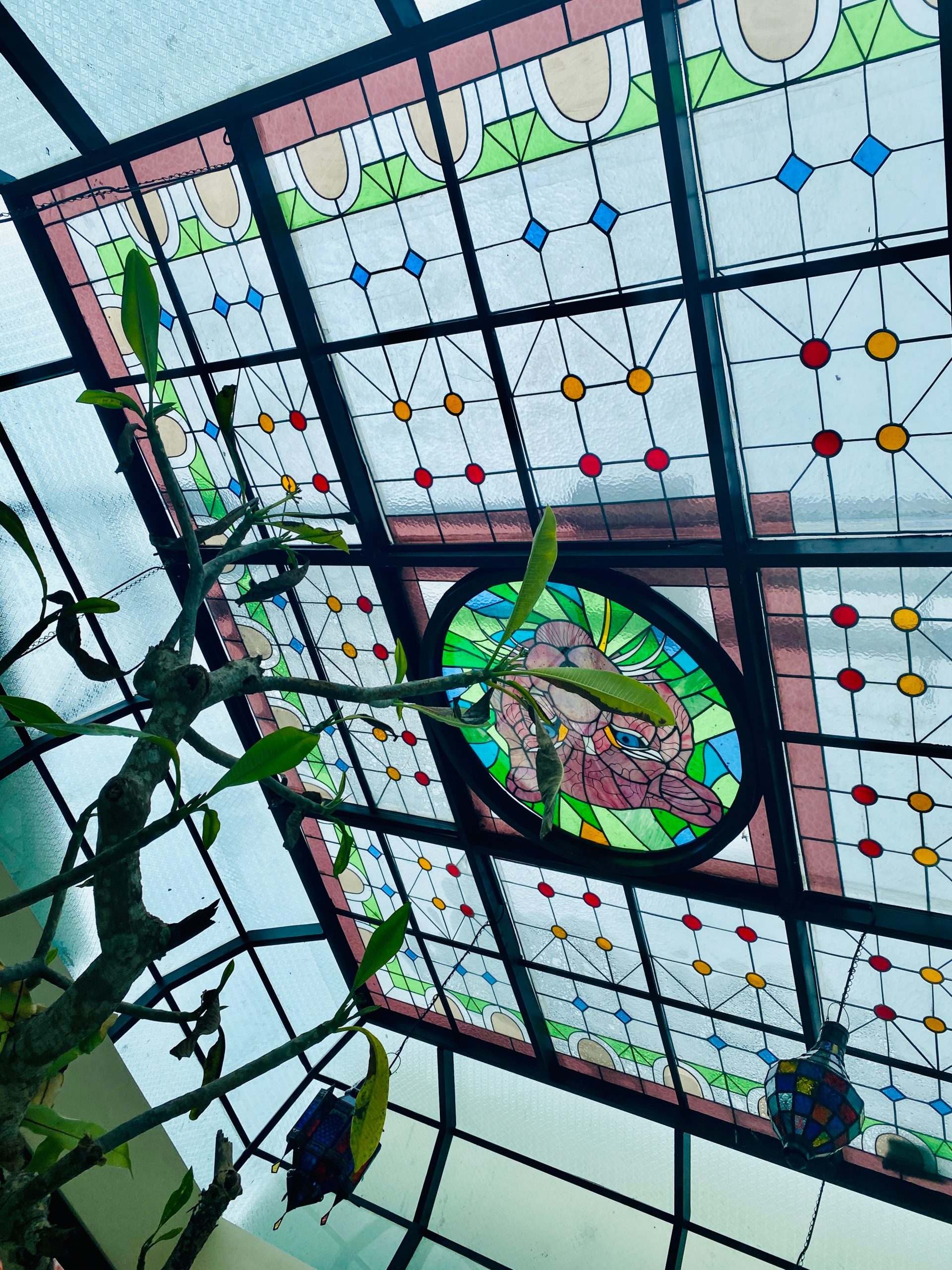Last week, a client stood in her newly built villa in Uluwatu, hands on hips, looking at the empty window frames. "I love stained glass," she said, "but how do I know what will work with my home?" It's a question I hear daily. Too many homeowners choose stained glass based solely on personal preference, only to discover later it clashes with their space. True harmony happens when glass design becomes an extension of your home's personality—not an afterthought, but an integral part of its visual language. In this guide, I'll share the principles I use to create seamless integration between stained glass and living spaces.

Understanding Your Home's Architectural Language
Before selecting a single glass piece, you must understand your home's architectural "accent." Just as people have regional accents that shape how they speak, homes have visual accents that define their character. Is your villa modern minimalist with clean lines? Traditional Balinese with intricate wood carvings? Colonial with ornate moldings? Each architectural style speaks a different visual language, and your stained glass should respond in kind.
For a recent project in Seminyak, I worked with a couple who had a stunning contemporary villa with sharp angles and minimalist interiors. They initially wanted a traditional floral stained glass piece for their entryway—a beautiful design, but completely at odds with their home's aesthetic. Instead, we created a geometric abstract piece using the same angular motifs found in their architecture, rendered in a restrained palette of three blues that complemented their ocean views. The result wasn't just glass in a window—it became an intentional extension of their home's design narrative.
Color Harmony Principles
Color is where most homeowners stumble. They see a stunning stained glass piece with vibrant reds and purples, fall in love with it, and install it in a space dominated by earth tones—creating visual dissonance rather than harmony. The key is to treat stained glass as part of your home's color ecosystem, not an isolated element.

In Bali's tropical climate, I often recommend using stained glass to either complement or thoughtfully contrast with the natural environment. For a villa with lush green surroundings, warm amber and gold tones create a beautiful harmony, while deep blues provide a striking counterpoint. The critical step is identifying your home's dominant and accent colors—don't just look at walls and furniture, but consider the colors that naturally enter through windows throughout the day.
Space-Specific Applications
Not all spaces in your home demand the same approach to stained glass. The function and emotional purpose of each room should guide your design choices. What works beautifully in a meditation room would overwhelm a workspace; what enhances privacy in a bathroom might feel too restrictive in a living area.
Room-by-Room Integration Guide:
- Entryways: Use bold, welcoming motifs that set the tone for your home. Geometric patterns work well for contemporary spaces, while traditional motifs suit more ornate architecture
- Living Areas: Choose designs that complement your primary furniture arrangement. For open-plan spaces, consider how the glass interacts with multiple zones
- Bathrooms: Prioritize privacy with more intricate patterns, but maintain light flow with strategic color placement
- Bedrooms: Opt for calming, organic motifs with soft color transitions that support relaxation
- Meditation/Yoga Spaces: Incorporate sacred geometry or nature-inspired designs that enhance the room's purpose
One of my most rewarding projects involved a family in Canggu who wanted to transform their ordinary hallway into a special transition space between public and private areas of their home. We installed a series of small stained glass panels with a motif inspired by traditional Balinese canang sari offerings, using colors that shifted from warm to cool as you moved through the hallway. The result was a space that didn't just connect rooms, but created an intentional journey—a perfect example of glass design serving both aesthetic and functional purposes.
The Light Factor: Working With Your Home's Natural Illumination
Stained glass is ultimately about transforming light, so understanding your home's light patterns is crucial. A design that looks stunning in north-facing morning light might feel completely different in south-facing afternoon sun. In Bali, we have the unique challenge (and blessing) of intense tropical light that changes dramatically throughout the day.
For a villa in Ubud with dense jungle surroundings, I recommended lighter, more transparent glass designs to maximize the limited natural light. In contrast, for a beachfront property in Nusa Dua with abundant sunlight, we used deeper, more saturated colors that could hold their own against the bright backdrop. The same principle applies everywhere: observe how light moves through your space at different times of day before finalizing your glass design.
Personalization Without Clashing
Many homeowners want to incorporate personal meaning into their stained glass—family symbols, meaningful colors, or cultural references—but worry about creating visual discord. The solution lies in abstraction and integration rather than literal representation.
When a client wanted to honor her Scottish heritage in her modern Balinese villa, we didn't create a literal tartan pattern (which would have clashed with the architecture). Instead, we abstracted the tartan into geometric lines using the same color palette, integrating them subtly into a larger Balinese-inspired design. The result was deeply personal yet perfectly harmonious with the home's overall aesthetic.
Tips for Meaningful Integration:
- Abstract first: Convert meaningful symbols into simplified geometric or organic forms that complement your architectural style
- Limit personal elements: Restrict highly personal motifs to 20% of the overall design to maintain visual balance
- Use color symbolism: Incorporate meaningful colors in ways that support your existing palette rather than competing with it
- Scale matters: Larger installations can handle more complexity; smaller pieces benefit from simpler, more focused symbolism
I recently completed a project for a yoga retreat center where each room featured stained glass incorporating subtle references to the chakra system. Rather than using the traditional rainbow sequence (which would have created visual chaos), we developed a restrained palette where each room's dominant color gently referenced a specific chakra, with the intensity of color corresponding to the room's purpose. The result was deeply meaningful without being overt or distracting.
Your Home's Visual Symphony
Creating harmony between stained glass and your home isn't about following rigid rules—it's about developing a visual sensitivity to how elements interact. The most successful installations feel inevitable, as if the glass was always meant to be there, enhancing rather than competing with your space.
When done right, stained glass doesn't just decorate your home—it becomes part of its soul, transforming ordinary light into an experience that resonates with who you are and how you want to live.
Create Your Harmonious Glass Design